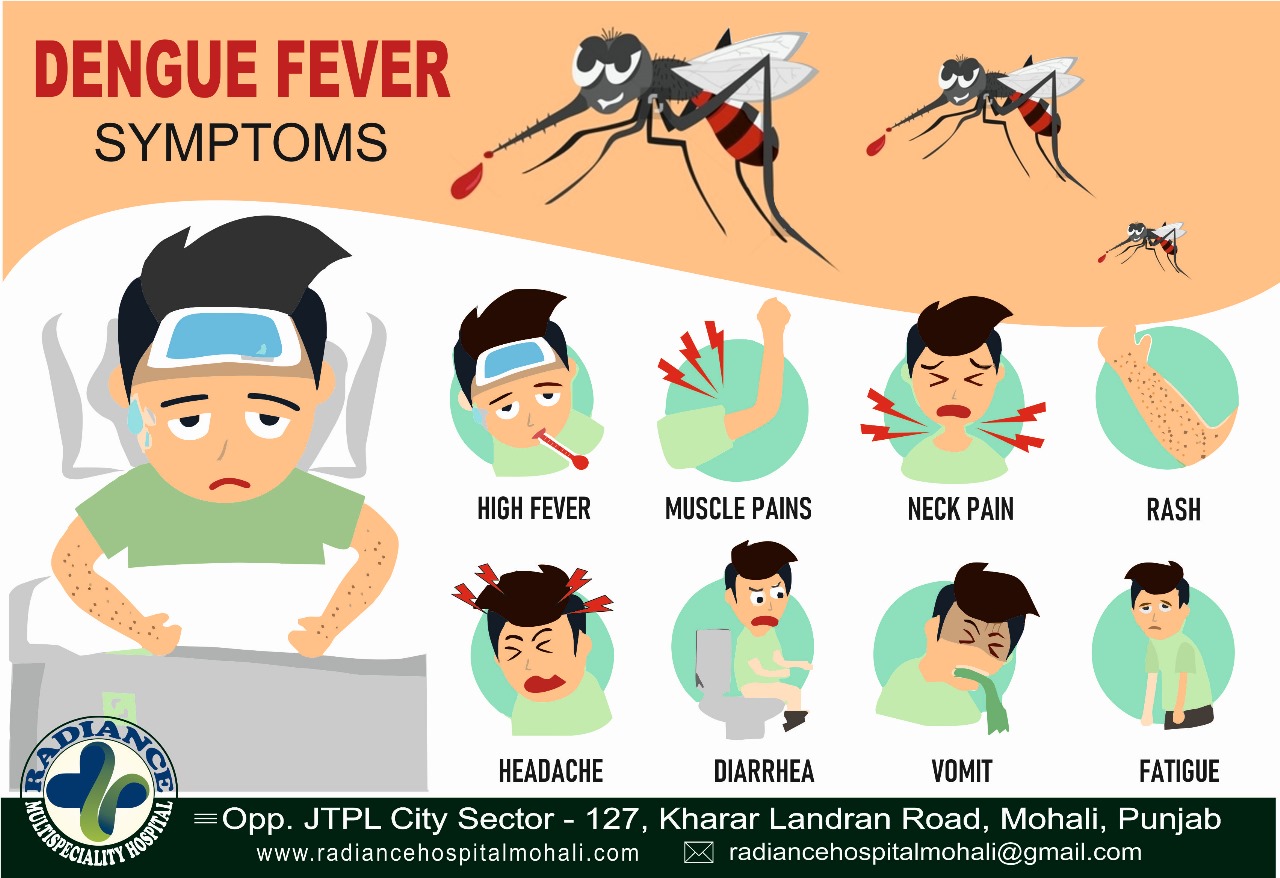Dengue fever is a viral infection transmitted through the bite of infected mosquitoes, particularly the Aedes species. The signs and symptoms of dengue fever can vary from mild to severe, and they typically appear within 4 to 10 days after being bitten by an infected mosquito. Here are the common signs and symptoms:
1. High Fever: Sudden onset of high-grade fever, often reaching 104°F (40°C) or higher, is one of the hallmark symptoms of dengue fever.
2. Severe Headache: Intense headaches, usually located behind the eyes or in the frontal area, are commonly reported.
3. Joint and Muscle Pain: Severe joint and muscle pain, often described as bone-breaking pain, is a characteristic symptom. It is also known as “breakbone fever.”
4. Rash: A maculopapular rash can develop over the body, typically appearing after a few days of fever. It may be itchy and usually fades away after a few days.
5. Eye Pain: Pain behind the eyes is a common symptom, and eye redness or sensitivity to light may accompany it.
6. Fatigue and Weakness: Feelings of extreme tiredness and weakness are often experienced, even after the fever subsides.
7. Nausea and Vomiting: Many individuals with dengue fever experience nausea, vomiting, and loss of appetite.
8. Swollen Lymph Nodes: Enlarged lymph nodes, particularly in the neck and groin areas, may be observed.
9. Bleeding: In severe cases, bleeding manifestations such as nosebleeds, bleeding gums, or easy bruising may occur. This is known as dengue hemorrhagic fever, a potentially life-threatening form of the disease.
It’s important to note that the severity of symptoms can vary. In some cases, dengue fever may be asymptomatic or present with mild symptoms, while in others, it can progress to severe dengue with potentially life-threatening complications. If you suspect you have dengue fever, it is important to seek medical attention for proper diagnosis and management.
